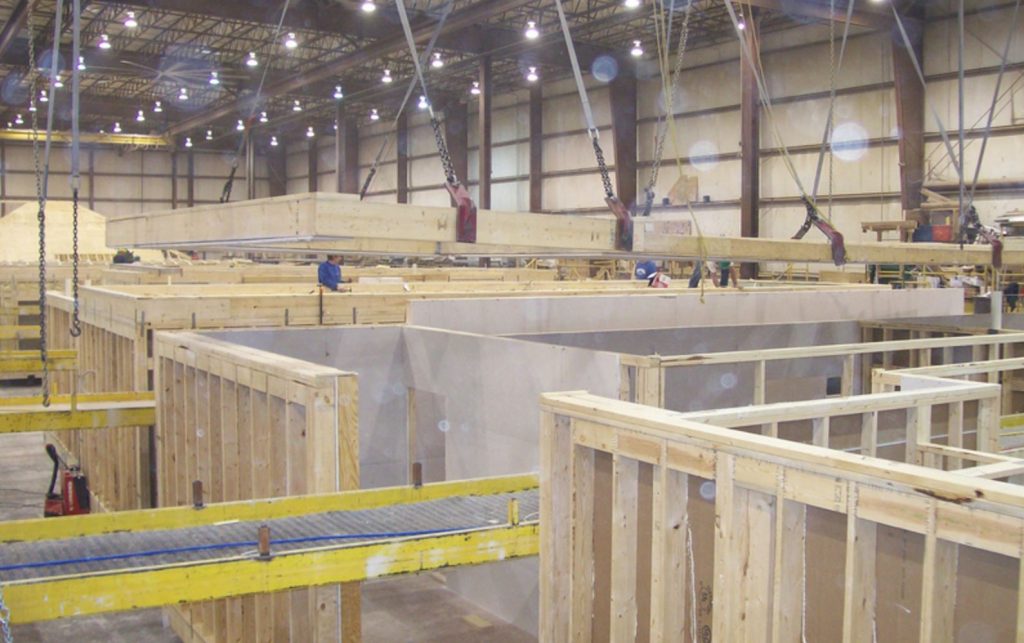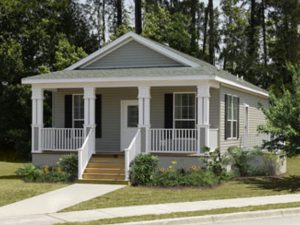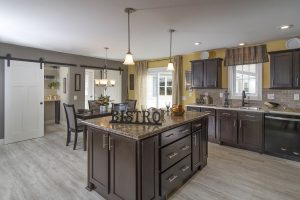What are Factory Built Homes?


This is a term that may not be familiar to many that are looking for a new home. For many, being built in a factory means quality. Almost everything you buy is built in a factory; your phone, your watch, and your car. You depend on the consistency of the process, the speed of production, and the quality of the product when something is built in a factory. But what about factory built homes?
Factory Built Homes Can Mean Very Different Things
One of the things people get very confused about is the difference between a modular home and a manufactured home (mobile home). First, a little history. There is no longer such a thing as a mobile home. In 1976 the U.S. Department of Housing and Urban Development (HUD) ended the authority for a factory to produce mobile homes and created a name and definition for a new thing called a manufactured home. A manufactured home is built to a building code that is defined, maintained, and enforced by HUD itself.
In the industry, a manufactured home is also called a HUD home. Manufactured homes are constructed according to the code administered by HUD also known as the HUD Code. The HUD Code, unlike conventional building codes, requires manufactured homes to be constructed on a permanent chassis. The other big difference is that it is a performance-based code. What this means is that HUD tells a manufacturer that their manufactured home must meet a specific performance standard (i.e. must be able to withstand 90 mph winds) but doesn’t tell them how to do it. This allows manufactured homes, which are factory built homes, to be built as cheaply as possible using the advantages of a manufacturing process.
RELATED: USING THE RIGHT TOOLS TO GET MODULAR HOMES TO DIFFICULT JOBSITES
Modular homes are constructed to the same state, local or regional building codes as site-built homes but are built using a system in a factory. Other types of systems-built homes include panelized wall systems, log homes, structural insulated panels, and insulating concrete forms. Modular homes are factory built homes that meet or exceed local building codes and don’t get exposed to the perils of outdoor construction. This can include rain, snow, freezing, theft of material, mud, etc.
Manufactured Homes
 While a manufactured home is a member in the family of factory built homes, it was created for a very specific purpose. It was meant to offer affordable, low cost, owner occupied housing to the masses. Because of this, it makes some significant deviations from the International Residential Code (IRC). The IRC is the building code that all other new homes that are built in the U.S. must follow. HUD, by permitting homes to be built to a reduced standard, allows factories to build this type of home at a much lower cost.
While a manufactured home is a member in the family of factory built homes, it was created for a very specific purpose. It was meant to offer affordable, low cost, owner occupied housing to the masses. Because of this, it makes some significant deviations from the International Residential Code (IRC). The IRC is the building code that all other new homes that are built in the U.S. must follow. HUD, by permitting homes to be built to a reduced standard, allows factories to build this type of home at a much lower cost.
A HUD Code home manufacturer can save in the cost of constructing a home in many ways. The most obvious, and the one that most people use to identify the home as a manufactured home (or incorrectly as a mobile home), is a required frame or chassis that is permanently attached. This saves costs both when constructing the home and when siting the home. Because it is actually a permanent structural part of the home, the home doesn’t require as much lumber in the floor assembly. Because the metal frame is rigid, it acts as part of the foundation making it much cheaper to “install” on site. Costs are reduced in many other ways which can include:
- A reduced requirement for the number of electrical outlets
- No requirement for taped and finished drywall
- A reduction in dimensional framing materials
- A lower standard for insulation.
Many subdivisions have covenants and restrictions which do not allow for manufactured homes. However, in locations where they are allowed, the local building department has to accept the home as built and installed per the manufacturer’s installation requirement. This typically means a reduced timeframe for permits and an abbreviated onsite inspection process.
Modular Homes
 Modular homes are the top level in factory built homes. They are ONLY built to the local building code, just as a traditional, site built home. And while a modular home does take advantage of the efficiencies of factory construction to deliver great value, they also take advantage of many other opportunities.
Modular homes are the top level in factory built homes. They are ONLY built to the local building code, just as a traditional, site built home. And while a modular home does take advantage of the efficiencies of factory construction to deliver great value, they also take advantage of many other opportunities.
By using a system of construction, they are built and inspected to meet the required building code. Code compliance inspections, which are performed by state-designated third parties, are performed in the factory. In addition, there are quality inspections which typically don’t take place with homes constructed onsite. A modular home is designed to withstand the rigors of being transported to the home site on carriers and lifted by a crane to be placed on a permanent foundation. This means a typical modular home far exceeds the structural integrity of a regular home constructed onsite.
When it comes to factory built homes, the design flexibility of a modular home is a key differentiator from its lower cost counterpart. With today’s engineering and construction flexibility, a home can be offered in just about any style with all the features most home-buyers desire. Dormers, porches, open floor plans, cathedral ceilings, and multiple roof lines are just a few characteristics that can be included in today’s modular home plans.
Energy efficiency has become more important to today’s custom home buyer. In addition, the most recently enacted building codes have increased the requirement for energy efficiency in modular homes to a level that far exceeds that of it entry level cousin. This means lower overall energy usage for the home that enhances comfort while simultaneously saving money.
Factory Built Homes, Making the Right Choice
When it comes to factory built homes, there are two choices. Each one is constructed very differently to meet the needs of two very different home buyers. They both share the efficiencies and value that factory construction can offer but that is where the similarities end. Affordable housing is an important need in the U.S. and manufactured homes are designed to address that segment with an affordable option.
A modular home is designed to provide the majority of America’s home buyers with a well built, high quality home. It can do this at a value that can only be provided by utilizing the efficiencies of indoor factory construction. Combine that with outstanding design flexibility and high energy efficiency and you have a combination that far exceeds that of a home built using traditional, outdoor construction.
The post What are Factory Built Homes? appeared first on Impresa Modular.




